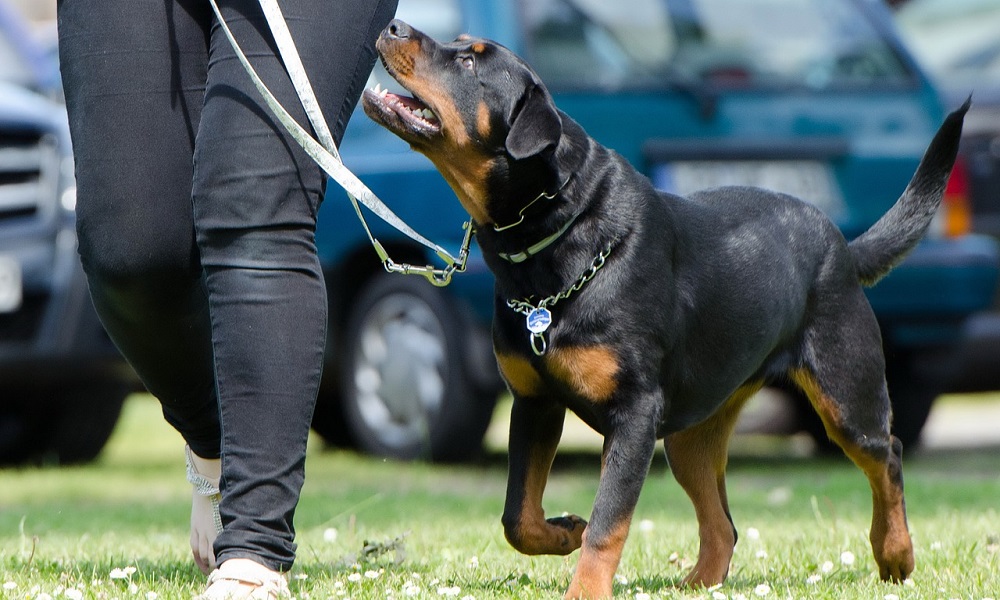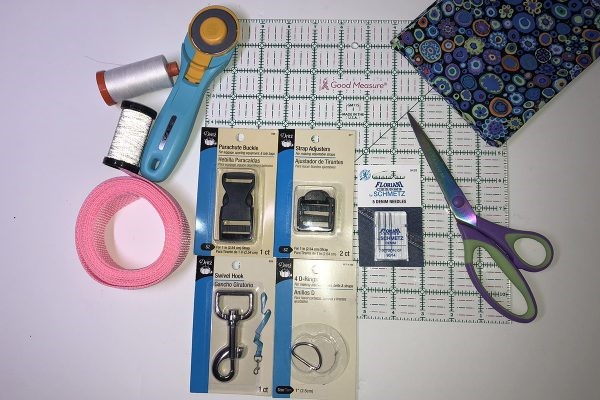How to Train a Dog with a Shock Collar?
An E-Collar, also known as a shock collar, is a training tool used to correct and reinforce good behavior and habits in dogs.
While these are one of the most widely used training tools, shock collars have a lot of controversy around them and for a good reason.
A lot of people consider these inhumane and a very cruel way to discipline dogs. E-collars are not harmful if they are used the right way.
Usually, the collar remote allows you to change the levels of the shock and the vibration, and trainers usually begin with the lowest number. While these are called electric collars.
There are two ways you can use them; the first way is the simple vibration that produces a minimal buzz around the pet’s neck.
The second level is a slight shock; while this is not harmful to the canine, it can certainly get the dog’s attention quickly.
These collars are a way for you to get your pet’s attention and register the commands as instinct. It is only recommended to use these when other training methods have failed or if your dog exhibits extremely aggressive behavior.
We will talk about how to use a dog shock collar and which kind of training are these most suitable for. We will also share tips and tricks to get the most out of each training session.
How to Use a Shock Collar for Training a Dog? [Step by Step]
A dog shock collar should be used properly in order to train your dog. It is basically an effective way to communicate with your dog without abusing your power of control.
Shock collar training works for about everything, from training your pet to stop excessive barking to the complex boundary training for safety.
Depending on how you are using it, its effectiveness can vary. The key is to find the right balance between the shock ranges and use clear, obvious commands.
You cannot expect the dog to understand something if you are randomly pressing the shock button or are standing really far away. What we need is a proper system.
Create a plan and list down the things you want your pet to learn. If you want to correct behavioral issues, add them to the list.
What you need in order for the training to succeed is a good quality shock collar, your pet’s favorite treats, a leash, and lots of patience. With all that set, let’s get started.
Following is a list of steps you can follow to ensure a nicely trained, behaving dog.
Step 1:
The first step is to focus on training your dog with the basics before collar conditioning. Unlike regular collars, which are more or less just a strap around the neck, E-collars are different.
To make your dog learn basic commands, you need to enforce them without asking them to “sit” or “heel” multiple times. The canine should know basic commands for their safety in certain situations.
When going for a hike or camping in the wilderness, there might be other animals too. Your dog needs to be trained to avoid attracting any dangerous animal.
It is going to be a bad day for everyone. If you are unable to teach basic commands to your dog, then it is important to hire a professional trainer.
If this is your canine’s first time using one, it will take some time for your pooch to get used to it. Do not rush it, as it is extremely important that your pet feels comfortable wearing the device. Once your pet feels comfortable, we can move to the next step.
Step 2:
Now if your pet has already gone through some basic training and listens to commands like sit, stay and come here, go over these again. It is essential for your dog to get used to the collar before making it functional.
For that, you need to put it on your dog when going for a walk or run. Then, you need to set a level of enforcement on the device. The level of stimulation should be set according to the dog’s behavior.
If he is understanding with a lower frequency, then there is no need to increase the intensity. For effective use of the shock collar, it is imperative to adjust it in a way that it touches with your dog’s neck.
Make sure to avoid over-tightening the collar. Our goal is to train the dog, not to cause depression or pain. If you start from difficult steps at first, your canine may end up hating the training session.
This is why it is recommended to start off easy. Keep it up till your pet is able to listen to all the basic commands without the need for the collar.
Step 3:
Start by using a leash and secure the collar around your pet’s neck. In this step, you can start off by teaching your dog with a “come” command.
You will be calling your canine to come towards you while you are holding the end of the leash. Here it is important that your pet knows exactly what you are telling him to do.
If it is not obeying you, you can give a low shock to see if the intensity suits your dog. You can increase the stimulation to cause a little annoyance.
Make sure to avoid hurting or abusing it. As the device works effectively, you will notice that your dog is now obeying you.
This step can be a little tricky, and you will have to time the voice command and collar signal correctly. When your canine is not paying attention, use the lowest vibration level, make sure it is a single tap of the button.
At the same time, tug the leash lightly and call your pet towards yourself. This is sure to get your pooch’s attention.
If the command is not coordinated with the collar signal that your pet will not be able to understand the meaning of the minor shock.
Repeat till your pet starts to look at you the moment the collar button is pressed. This step needs to be perfected before moving on to the next one because our goal is to get your pet to listen without depending on the leash or the collar.
Step 4:
In this step, you will be teaching your pet to respond to commands from a distance. Take the leash off and train your pet to come to you when called.
Like the previous step, when your pet successfully obeys, reward him instantly. Treats are an excellent addition and they convey the message that this is what you wanted your pet to do.
Following this method, you can train your pet for almost anything. Dogs that show aggressive behavior may require some extra effort, time and use of pet pheromone sprays. Make sure to only increase the shock level if you really need it.
Dog Shock Collar Training Tips
- Don’t use the collar in front of your dog. He should not know that you are behind the vibration and electric shocks. Use the remote carefully.
- Do not start off with a higher vibration or shock level. Always start by the lowest level and keep it at that until you really need to use a higher level.
- Pets require time to learn and so will your pooch. Do not rush him by using a higher power of collar.
- Start off by revising the simple tricks your pet already knows. This makes the training collar easy and a pleasant experience.
- Instant praising and rewards are a great way to get your canine to learn a command.
- E-collars should be used only when any other traditional methods of training have failed.
- Make sure to learn about the different levels and range benefits before using the collar on your dog. The wrong usage of a shock collar can eventually lead to your pup hating training and collars altogether.
- Always use a verbal command with the collar signal. The low vibrations are a lot like a tickle to dogs and in order for the command to be registered, you need to verbalize it.
- In collar training, you should start with the lowest level and also end it at the lowest vibration. The reduced shock levels are useful when your pet is getting every command right. It provides a further confidence boost and improves your pet’s habits.
Precautions
- Since most shock collars use electric current, these are not a good match for water. While most e-collars are waterproof, you should always monitor your pet. If your canine is going for a swim or it is raining outside, then it is strictly advised to remove the collar before taking him outside.
- Using higher shock levels excessively can irritate your pooch and affect your relationship.
- Use the collar to reinforce habits and commands and don’t rely on it entirely. Ideally, your pet should understand and respond even on a verbal command.
- Shock collars are different from regular collars and therefore your pet may require some time getting used to the feeling of wearing them.
- The collar strap is important, if your pet is irritated by the collar, he will try to forcibly take it off. It is recommended to opt for durable, non-allergenic materials like nylon or leather.
- The collar’s shock area is usually limited. It is advised to rotate the collar at least every few hours. This is done to avoid bad sores or irritation.
- Clean the collar nicely so the internal parts keep on functioning normally.
- Never leave your pet alone when he is wearing the collar.
- Do not use the collar when your pet is away from your range of sight.
Conclusion
Shock collars are a useful tool to correct a dog’s aggressive behavior and for basic training. While many people think that these are dangerous for your pets, the real control is in your hands.
When used properly in a specific range, the shock collar can be a handy tool that doesn’t harm your pet and instead, helps him learn and coordinate with you better.
Training a pet is no easy task whether you are using helping tools or not. The trick to succeeding is timed rewards and a lot of perseverance.
When the collar signal is properly coordinated with verbal commands, your pet will be able to learn commands faster and know what behavior is not acceptable.
To make sure your pooch doesn’t get harmed by the collar, it is recommended to rotate and clean in after regular intervals. Use the lower range of the levels and only increase it when extremely necessary.





